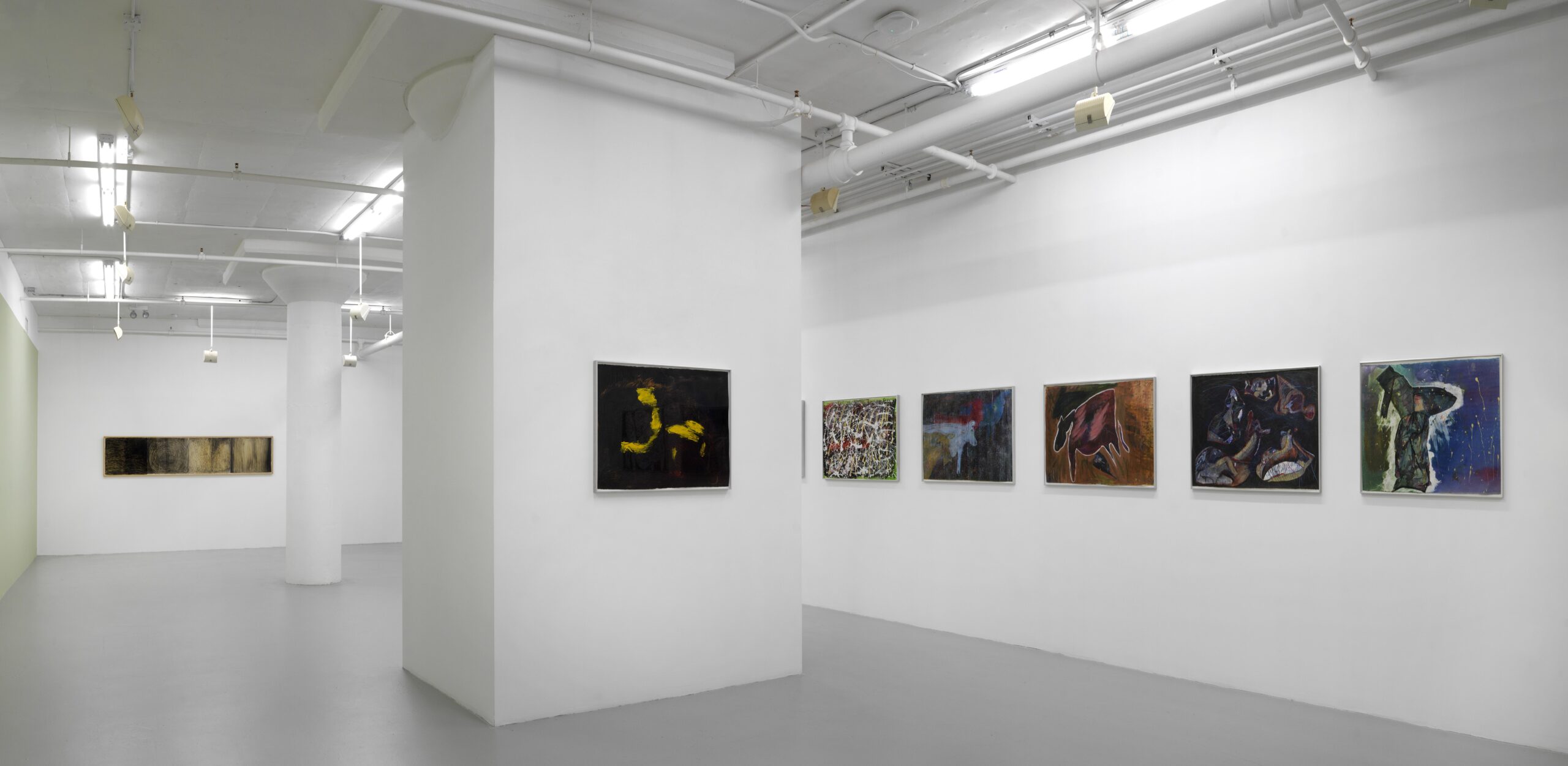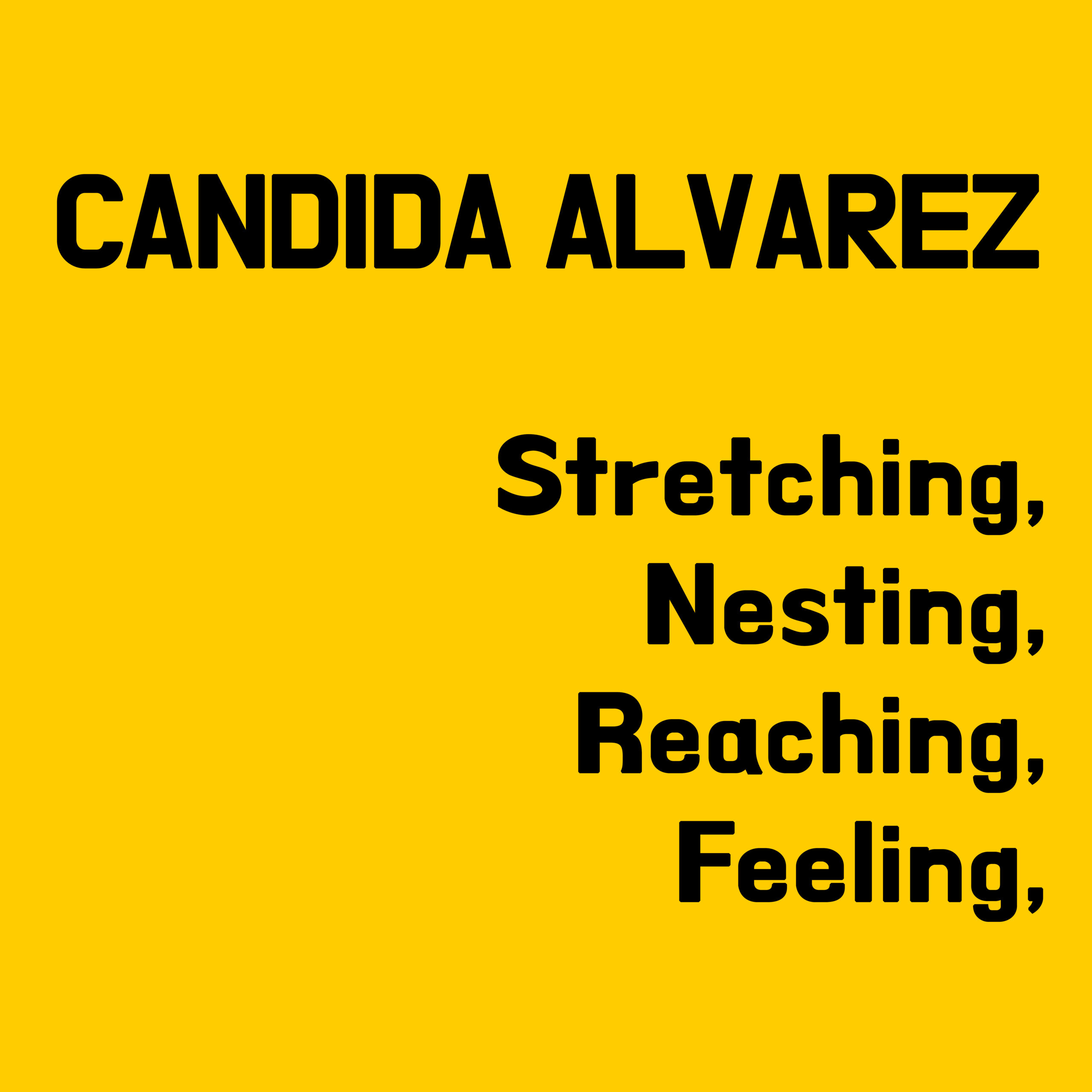Visiting hours: by appointment, please email us to schedule your visit: info@monirafoundation.org

Visiting hours: by appointment, please email us to schedule your visit: info@monirafoundation.org
Monira Foundation proudly presents Candida Alvarez. Stretching, Nesting, Reaching, Feeling, a year long exhibit at Mana Contemporary Chicago. Curated by Ysabel Pinyol Blasi.
1981 was Candida Alvarez’s breakthrough year. Attending the Skowhegan School of Painting & Sculpture during the summer (she returned as a faculty member in the summer of 2023), Alvarez took full advantage of her rural surroundings to establish some of the core concerns of her work to which she remains committed to this day. Foremost among them is place in the most varied visual, material, and social terms possible. At Skowhegan, Alvarez gravitated toward cows grazing in nearby fields not only as slow moving yet perpetually changing embodiments of the landscape itself but also as providers of the diversity she has looked to in her work from the very beginning.
This brings up her second core concern: from the outset, Alvarez has resisted, as she has put it, having her work “put in a box.” Boundaries and categories thrive on fixed exclusion; Alvarez has always made her work as a place of “moving” inclusion, in both senses of the term. Created away from an urban center at a time when contemporary art was upending the limitations of modernism, Alvarez’s series of cows begin with the tradition of the close observation of nature as a kind of common ground that enables them to move out into all sorts of territories—new, imagined places and situations identified by her titles (for example, Ancient Cow, Cows caught in a dream, Cows in Revolution, Cows in the Ocean, Dancing Cow, Weeping Cow) yet brought to life by a dynamic range of pictorial and material conditions. They might all be connected by their bovine inspiration but even as a specific series they resist any and all sameness.
Not surprisingly, the cow series does not function apart from other works Alvarez made simultaneously, some of which, at first glance, may read as “abstract,” as in not representational. Again, their titles reinforce the range of stuff that went into their making, whether in the form of actual collaged elements and/or the specific places from which they came. I Used to Wear That in High School, for example, distributes the “drip” technique of Jackson Pollock’s paintings across a surface that also includes the actual patch from Alvarez’s high school uniform, and Missy Miss incorporates the fabric of an article of clothing with that label. Alvarez, like several artists of her generation, repositioned collage as something that would maintain rather than remove the threads of its history, keeping it, simply put, personal.
By juxtaposing works from 1981 with one from ten years later, and another ten years after it, this exhibition encapsulates the beginning twenty years of Alvarez’s development while reinforcing the substantive impact of the earliest works. Made in 1992, Stretching, Nesting, Reaching, Feeling is a prime example of the dynamic trajectory of the mark-making that she began a decade before: made after the birth of her son, it transforms the terms of each of its named actions into a visual narrative that can be read from left to right or vice versa. Language, and the words used to convey it, have also been important in Alvarez’s work from the beginning (take note, for example, of Sonnet from 1981), and the 1990s became a decade of exploring it as abstract and representational, descriptive and poetic, systematic and improvisational, all the while never relinquishing the value of place. No where is this more apparent than in Celia, Alvarez’s video from 2002 that shows her mother in the process of making pasteles in her home in Puerto Rico. As the work itself moves through several visual effects, it steadfastly remains a system, a language, a moment and a known place of unending connection.
-Terry Myers

Don't miss out on new events, programs, and artist opportunities!